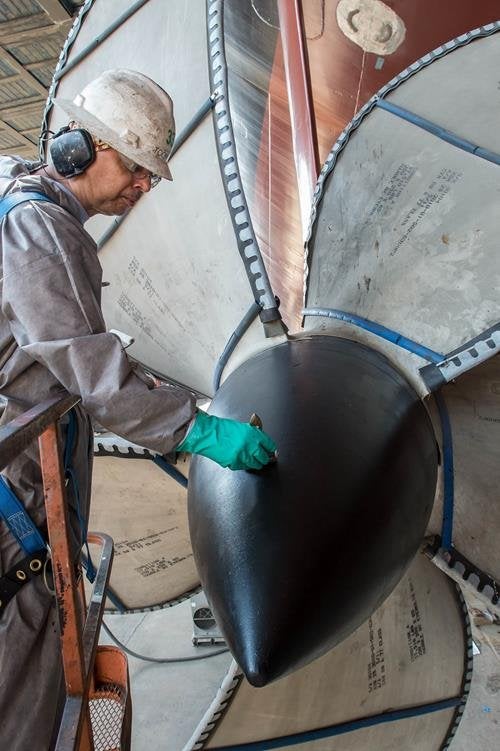
Huntington Ingalls Industries (HII) has successfully completed installation of four 30t propellers onboard the US Navy’s Gerald R Ford-class nuclear-powered aircraft carrier, Gerald R Ford (CVN 78) at its Newport News Shipbuilding (NNS) division.
Scheduled to be christened on 09 November 2013, continuing work on the vessel includes the piping and electrical systems and living areas such as the galley and mess spaces.
Designed to replace Nimitz-class aircraft carriers for the US Navy, the Ford-class carriers will be armed with the Raytheon evolved Sea Sparrow missile (ESSM) to strike against high-speed, highly manoeuvrable anti-ship missiles, as well as a rolling airframe missile (RAM) close-in weapon system.
NNS CVN 78 carrier construction vice president Rolf Bartschi said the propellers installation on to the aircraft carrier culminates more than 10 months in support of installing the underwater shafting.
"The configuration of the blades, the weight of the propellers and the extremely tight tolerances required make this a challenging installation," Bartschi added.
The 100,000t Ford-class ships will be capable of operating up to 90 aircraft, which include the F-35 Joint Strike Fighter, F/A-18E/F Super Hornet, E-2D Advanced Hawkeye, EA-18G Growler electronic attack aircraft, MH-60R/S helicopters and unmanned air vehicles and unmanned combat air vehicles.
In addition to featuring a new nuclear power plant, the ships of the class are fitted with a redesigned island, electromagnetic catapults, improved weapons movement and an enhanced flight deck for increased aircraft sortie rates.
The 1,092ft-long Gerald R Ford-class vessels will have a beam of 134ft, and can arm, refuel, launch and recover aircraft quickly.
The second ship of the class, John F Kennedy (CVN 79) is also currently under construction and is expected to be complete in 2020.
Image: A NNS shipbuilder applies a protective coating on to a propeller of the Gerald R. Ford (CVN 78). Photo: Photo by Chris Oxley.





